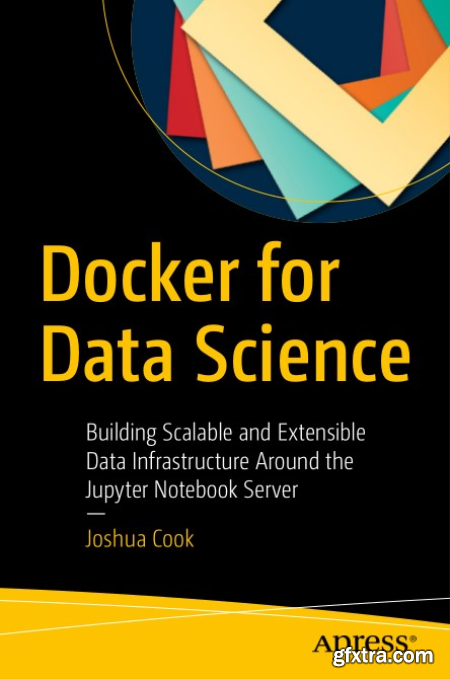
English | PDF | 2017 | 266 Pages | ISBN : 1484230116 | 6.94 MB
Learn Docker "infrastructure as code" technology to define a system for perfog standard but non-trivial data tasks on medium- to large-scale data sets, using Jupyter as the master controller. It is not uncommon for a real-world data set to fail to be easily managed. The set may not fit well into access memory or may require prohibitively long processing. These are significant challenges to skilled software eeers and they can render the standard Jupyter system unusable. As a solution to this problem, Docker for Data Science proposes using Docker. You will learn how to use existing pre-compiled public images created by the major open-source technologies—Python, Jupyter, Postgres—as well as using the Dockerfile to extend these images to suit your specific purposes. The Docker-Compose technology is examined and you will learn how it can be used to build a linked system with Python churning data behind the scenes and Jupyter managing these background tasks. Best practices in using existing images are explored as well as developing your own images to deploy state-of-the-art machine learning and optimization algorithms. What You'll Learn Master interactive development using the Jupyter platform Run and build Docker containers from scratch and from publicly available open-source images Write infrastructure as code using the docker-compose tool and its docker-compose.yml file type Deploy a multi-service data science application across a cloud-based system Who This Book Is For Data scientists, machine learning eeers, artificial intelligence researchers, Kagglers, and software developers
Top Rated News
- Sean Archer
- AwTeaches
- Learn Squared
- PhotoWhoa
- Houdini-Course
- Photigy
- August Dering Photography
- StudioGuti
- Creatoom
- Creature Art Teacher
- Creator Foundry
- Patreon Collections
- Udemy - Turkce
- BigFilms
- Jerry Ghionis
- ACIDBITE
- BigMediumSmall
- Boom Library
- Globe Plants
- Unleashed Education
- The School of Photography
- Visual Education
- LeartesStudios - Cosmos
- All Veer Fancy Collection!
- All OJO Images
- All ZZVe Vectors




